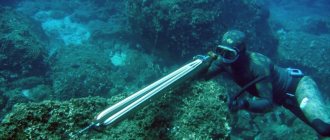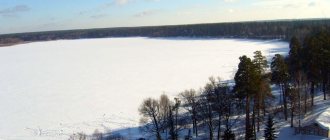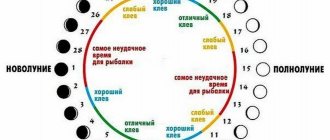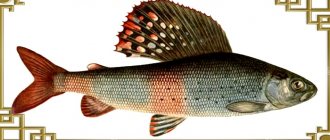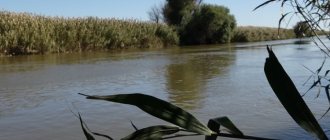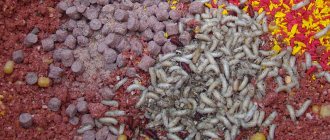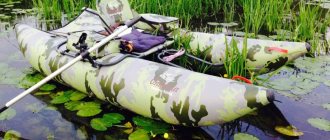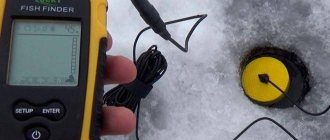The Baikal fishery basin includes Lake Baikal with the basins of the rivers flowing into it, the Angara River with reservoirs located on it and other water bodies of fishery importance located on the land territory of the Russian Federation within the borders of the Republic of Buryatia, the Trans-Baikal Territory and the Irkutsk Region, with the exception of ponds, flooded quarries owned by constituent entities of the Russian Federation, municipal and private property.
General restrictions for the regions of this basin are established by Order of the Ministry of Agriculture of the Russian Federation dated April 24, 2021 No. 226 “On approval of the Fishery Rules for the Baikal Fishery Basin.”
Where is recreational fishing prohibited?
It is prohibited to catch aquatic biological resources during the year:
1) in the delta of the Selenga River, including part of the said river, its channels (including the Lobanovskaya, Severnaya, Kolpinka, Kolpinaya and Sredneye estuary channels), branches, as well as oxbow lakes and the coastal zone of Lake Baikal, in an area limited by:
- from the south and west - a straight baseline connecting points with coordinates 52°14′ N. — 106°31′ E (Kondakovsky Island) and 52°21′ N. — 106°20′ E (water area of Lake Baikal);
- from the east - a straight baseline connecting points with coordinates 52°14′ N. — 106°31′ E (Kondakovsky Island) and 52°23′ N. — 106°40′ E (water area of Lake Baikal);
- from the north - a line equidistant at a distance of 1.5 km from the coastline of Lake Baikal, connecting the above points with coordinates: 52°21′ N. — 106°20′ E and 52°23′ N — 106°40′ E;
2) in Frolikhinskaya Bay;
3) in the Chivyrkuisky Bay of Lake Baikal in areas limited by:
- a straight starting line passing through the points of capes Goryachinsky (Zmeevy), Ongokonsky, Fertik, most distant towards the bay, and a line running along the coastline of the lake and connecting the indicated points of capes Fertik and Goryachinsky (Zmeevy);
- a straight starting line connecting the point of Cape Bezymianny that is most distant towards the bay with the northern tip of Baklaniy Island, then a line running along the coastline of the eastern part of Baklaniy Island to its southern end, then a straight line to the point of Cape Irkana that is most remote towards the bay and then a line , running along the coastline to the specified point of Cape Bezymyanny;
- a straight starting line connecting the most distant point of Cape Kurbulik towards the bay with the southern tip of the Maly Kyltygei (Goly) island, then a line running along the coastline of the western part of the Maly Kyltygei (Goly) island to its northern tip, then straight lines sequentially connecting the most points of capes Ongokonsky and Kurbulik, remote towards the bay;
4) in lakes Davatchan, Leprindokan, Bolshoy Namarakit, Kulinda, Verkhnekicherskoye;
5) in the Borzya River within the Ononsky district of the Trans-Baikal Territory;
6) in the Bolshaya Yangoza and Agul rivers.
When is the extraction of aquatic biological resources prohibited?
1. It is prohibited to catch aquatic biological resources, with the exception of the use of fishing rods of all systems and names - float, bottom, wire, using gammarus (bormash) as bait (bait), spinning rods, in the amount of no more than one fishing rod per citizen with the number of hooks ( single, double or tee) no more than 2 pieces from the shore without the use of floating devices, as well as from the ice cover of a water body of fishery importance:
1) all types of aquatic biological resources:
- from May 1 to June 30 - in the basins of the Kichera and Upper Angara rivers, Lake Irkana and the Angarsky Sor Bay of Lake Baikal;
- from August 20 to November 15 - in the North Baikal fishing area of Lake Baikal;
- from September 10 to November 15 - in the Upper Angara River, including tributaries and channels;
- from September 20 to November 15 - in the Kichera River, including tributaries and channels;
- from the melting of ice to June 20 and from August 10 to November 10 - in lakes Arangatui and Small Arangatui and the Arangatuisky source channel connecting Lake Small Arangatui with Chivyrkuisky Bay, as well as at distances less than 3 km measured to the right, left and deep into Chivyrkuisky Bay from mouth of the Arangatui channel source. Distances from the mouths of watercourses flowing into a water body of fishery importance are measured from points on the banks of the said mouths that protrude as far as possible into the given water body;
- from August 10 to November 10 - in the Bolshoi Chivyrkui, Bezymyannaya rivers, as well as at distances of less than 3 km, measured to the right, left and deep into the Chivyrkui Bay from the mouth of the Bolshoi Chivyrkui River;
- from the melting of ice to June 20 - in the Chivyrkuisky Bay of Lake Baikal and the rivers flowing into it;
- from the period of freeze-up until the melting of ice - in a coastal zone 2 km wide around Baklaniy Island, located in the Chivyrkuisky Bay of Lake Baikal, measured from the coastline of the island;
- from the melting of the ice to July 5 (with the exception of catching carp with floating nets in the section of the Barguzin River from the mouth to the intersection with a straight line passing through points with coordinates 53°36'38.42″ N - 109°41'24.55 ″ E and 53°36'41.03″ N - 109°41'27.49″ E) and from August 15 to October 31 - in the Barguzin River basin, as well as at distances less than 3 km, measured to the right, left and deep into the Barguzin Bay of Lake Baikal from the mouth of the Barguzin River;
- from May 10 to July 5 - in Lake Dukhovoe;
- from April 25 to June 30 - in the Sor (Posolsky Sor) and Sor-Cherkalovo (Istoksky Sor) bays of Lake Baikal and the rivers flowing into them; in the Selenga River, as well as lakes and channels located in its delta;
- from April 25 to October 31 - in the Proval Bay of Lake Baikal and in its coastal zone 1 km wide, measured from the coastline running from the point of Cape Oblom, most distant towards the lake, to the beam of a point located at a distance of 4 km towards the village of Enkheluk;
- from August 1 to October 15 - in the area of Lake Baikal limited by:
1) from the south - a straight starting line connecting the point of Cape Goloustny that is most distant towards the lake and the mouth of the Boyarskaya River (near the village of Boyarsky);
2) from the north - a straight starting line connecting the points of capes Oblom and Aya that are most distant towards the lake;
3) from the west - a line running along the shoreline of the lake, connecting the indicated points of capes Goloustny and Aya;
4) from the east - a line running along the shoreline of the lake, connecting the mouth of the Boyarskaya River with the indicated point of Cape Oblom;
- from August 15 to November 15 - in the bays of Sor (Posolsky Sor) and Sor-Cherkalovo (Istoksky Sor) of Lake Baikal, in the Selenga River;
- from April 25 to June 30 - in the following areas of the Maloe More and Olkhon Gates of Lake Baikal:
1) in Mukhur Bay in an area limited from the north by a straight baseline connecting the points of capes Antukhay (Onthoy) and Ulan that are most distant towards the bay, from the south - by a line connecting these points and running along the coastline of the bay;
2) in Kurkutskaya Bay in an area bounded on the east by a straight baseline connecting the points of capes Shibete and Ulan that are most distant towards the Maloye More Strait, and on the west by a line connecting these points and running along the coastline of the bay;
3) in the bays of Bazarnaya, Second (Malaya) Kurkutskaya in an area limited from the east by a straight baseline connecting the points of capes Gakhte and Khargante that are most distant towards the Olkhon Gate Strait, from the west - by a line connecting these points and running along the coastline of the bay ;
4) in Zagli Bay in an area limited from the west by a straight baseline connecting the points of capes Ulyatai and Zabro (Khargante) that are most distant towards the Olkhon Gate Strait, from the east by a line connecting these points and running along the coastline of the bay;
- from September 25 to January 20 - in the area of the Maloe More and Olkhon Gates of Lake Baikal, limited to:
1) from the north - a straight starting line connecting the most distant points of the Hadarta (Hadartuy) and Khorgoy capes towards the Maloe More Strait;
2) from the south - a straight starting line connecting the most distant points of the Zabro (Khargante) and Yubukhan capes towards the Olkhon Gate Strait;
3) from the west - a line running along the coastline of the western coast of the above-mentioned straits, connecting the indicated points of capes Hadarta (Hadartuy) and Yubukhan;
4) from the east - a line running along the coastline of the western coast of Olkhon Island, connecting the indicated points of capes Khorgoy and Zabro (Khargante);
- from May 5 to June 30 - in the lakes of the Eravno-Kharginsky system and in the Kholoy River, connecting the system of Eravno-Kharginsky lakes with the Vitim River;
- from May 1 to June 30 - in Lake Gusinoye, as well as its tributaries (except for catching freshwater perch);
- from June 1 to June 30 - freshwater perch in Lake Gusinoye, as well as its tributaries;
- from May 1 to July 20 - in the Bayan-Gol River, as well as in the Tsaidam and other lakes of the Bayan-Gol River floodplain;
- from April 20 to June 30 - in the rivers Uda, Temnik, Dzhida and their tributaries;
- from April 20 to June 30 and from September 15 to October 31 - in the rivers Khilok, Chikoy and their tributaries;
- from May 1 to June 20 - in the Big and Small Amalat rivers and their tributaries;
- in the following water bodies of fishery significance (and their parts) of the Tsipo-Tsipikan (Bauntovskaya) system:
1) from June 1 to July 10 and from October 1 to November 15 - in lakes Oron and Kapyluchikan (Small Kapylyushi);
2) from September 1 to October 31 - in the Nizhnyaya Tsipa River, in the area from the mouth (including the mouth) of the Ugolnaya River (Uligli) to the confluence with the Vitim River, as well as in the Verkhnyaya Tsipa and Tocha rivers;
3) from May 20 to June 30 and from September 1 to October 31 - in the Oronskaya channel, connecting lakes Oron (Big Kapylyushi) and Kapyluchikan (Small Kapylyushi), Bogdanovskaya channel, connecting Lake Busani with the Nizhnyaya Tsipa River;
4) from May 20 to June 30 - in the Busanskaya, Mogoy channels connecting Lake Busani with the Nizhnyaya Tsipa River, the Tretyakovskaya channel connecting the Tretyakov Lakes with the Nizhnyaya Tsipa River, in lakes Gulinga, Busani and Tretyakovsky;
5) from March 10 to June 10 - in Lake Oron (Bolshoye Kapylyushi) in an area limited by:
a) from the east - a line running along the shoreline of the lake, connecting the point that is conventionally the confluence of the Oronskaya channel into Lake Oron (Bolshoye Kapylyushi), with the most distant point of the lake to the south, located on the specified line;
b) from the west - a line equidistant at a distance of 1 km from the above line (running along the shoreline of the lake);
c) from the north and south - by straight baselines connecting the above points with the points that are the perpendicular intersection of these straight baselines with the above-mentioned equidistant lines;
6) from March 10 to June 10 - in Lake Kapyluchikan (Small Kapylyushi) in an area limited by:
a) from the west and east - by straight lines equidistant at a distance of 0.5 km from the straight baseline connecting the point of Cape Boycha that is most distant towards the lake and the point where the Nizhne-Okunevskaya channel flows into Lake Kapyluchikan (Small Kapylyushi);
b) from the north and south - by lines running along the coastline of Lake Kapyluchikan (Little Kapylyushi), connecting the above straight lines;
7) from March 10 to June 10 - in Lake Dorong;
- from April 10 to May 31 - in the Argun, Onon rivers and their tributaries;
- from April 10 to June 30 - in floodplain lakes and channels of the Argun and Onon rivers;
- from May 1 to June 30 and from September 1 to October 15 - in the Chara, Vitim, Olekma rivers and their tributaries;
- from May 20 to June 30 - in the floodplain lakes of the Chara, Vitim, Olekma rivers;
- from April 20 to June 20 - in the Ingoda and Shilka rivers, their tributaries and floodplain lakes, in the lakes of the Ivano-Arakhlei group and their tributaries, as well as lakes in the Amur River basin;
- from May 15 to June 30 and from September 1 to October 31 - in lakes Bolshoye Leprindo, Maloye Leprindo, Nichatka, Amudis of the China River basin;
- from May 1 to June 15 - in all water bodies of fishing significance in the Angara and Yenisei river basins, with the exception of the Bratsk and Ust-Ilimsk reservoirs and the rivers flowing into them;
- from May 15 to June 30 - in all water bodies of fishery importance in the Lena River basin and in the Mamakan reservoir;
- from May 1 to June 30 - in the Bratsk and Ust-Ilimsk reservoirs and the rivers flowing into them using cast seines;
- from the freeze-up period to April 1 - in the Maloye More and Olkhon Gates of Lake Baikal with cast nets;
- from October 1 until the ice melts - in the wintering pits specified in Appendix No. 5 to the Fishing Rules;
- from May 1 to June 30 - ide and bream (residential form) in Lake Kotokel;
- from May 15 to July 31 - artemia (at the cyst stage) everywhere;
- from November 20 to December 31 - burbot in water bodies of fishery importance in the Trans-Baikal Territory.
2. It is prohibited to catch the following aquatic biological resources using any gear:
1) from August 20 to November 20 - Baikal omul and peled in the Bratsk Reservoir, in the Belaya River flowing into the Bratsk Reservoir (and its tributaries), in other rivers flowing into the Bratsk and Ust-Ilimsk reservoirs, as well as in the Angara rivers, Irkut, Kitoy and their tributaries;
2) from April 25 to June 25 - grayling, lenok, taimen everywhere;
3) from May 1 to June 15 - pike in the Irkutsk, Bratsk and Ust-Ilimsk reservoirs and the rivers flowing into them;
4) from September 1 until the freeze-up period - whitefish (freshwater residential form) in water bodies of fishery significance located in the territory of the Irkutsk region;
5) from May 1 to June 30 - pike in Lake Kotokel;
Popular fishing spots
The east and south coasts are popular fishing destinations, mostly visited by recreationalists. Shallow waters are frequently visited places due to well-warmed water. Weed fish live here: carp, perch, bream, catfish, carp, and pike.
Read: 12 best fishing spots in the Rostov region
Fish that live in shallow waters are called sorfish. They should not be confused with weeds. This species has no economic value.
Boat fishing is not popular due to gusts of wind that can capsize the boat.
Fishing is divided by season: summer, autumn, winter and spring. Each type has its own advantages and disadvantages. In addition, there are amateurs who go fishing only during certain seasons.
Summer fishing
Compared to spring and autumn, summer fishing is more difficult. First you need to find fishing spots, since fish don’t bite everywhere.
During this period, there is enough natural food in the water, which does not have a beneficial effect on the bite. Fish will not be caught at all in extreme heat; The favorite bait of Baikal fish are worms. Before arriving, you should collect them at home; The good biting begins earlier in the morning and at night, since after the water warms up, the fish go to depth.
Autumn fishing
The beginning of autumn fishing is not very different from summer. A good bite begins in the middle. In November, the time of strong winds on Lake Baikal begins. Before freeze-up, fish activity reaches a high level, which has a good effect on catches.
Read: Fishing on Sakhalin
Winter fishing
Baikal begins to freeze in December and melt in April or May. For lovers of winter fishing, December is the most favorable month compared to other months. Shallow waters are considered suitable territory in winter.
In the middle of winter, to get a good catch, you will have to spend some time looking for a place with a good bite. Areas with shallow depth are suitable. Shallow waters include bays, bays and estuaries. In winter, only artificial baits should be used.
Spring fishing
The spring ice is still strong, which makes it possible to go out on it. By this time, the fish gather in schools to go spawning. It’s easy to find the biting place - if you catch at least one fish, you should prepare for a good catch. Favorable months for fishing will be March and mid-April. Since the spawning ban begins to operate from the end of April to April.
Lake Baikal is a great asset not only to Russia, but also to the whole world, showing its majesty. We must not forget about the prescribed sets of rules that should be studied before arriving. There are places for lovers of landscapes and fishing lovers here.
What types of aquatic biological resources are prohibited from catching?
1) sturgeon species of fish;
2) nelma;
3) tench;
4) taimen in the Angara River, the Lake Baikal basin and in water bodies of fishery importance located on the territory of the Republic of Buryatia and the Trans-Baikal Territory;
5) lenok in the Angara River, the Lake Baikal basin and in water bodies of fishery importance located on the territory of the Republic of Buryatia;
6) Baikal seal, including Kumutkan puppies;
7) tugun in the Angara River;
 arctic char;
arctic char;
9) Baikal omul in Lake Baikal and the rivers flowing into it, including their tributaries (with the exception of catching Baikal omul from the ice cover of Lake Baikal using a bore fishing rod in the periods and places of catch specified in Appendix No. 6 to the Fishery Rules “Times and places of catch (catch) of Baikal omul, whitefish on Lake Baikal using a drill fishing rod");
10) whitefish in Lake Baikal outside the fishing grounds provided for the organization of recreational fishing, with the exception of catching whitefish on Lake Baikal using a drill fishing rod in the periods and places of catch specified in Appendix No. 6 to the Fishery Rules “Times and places of catching (catch) of Baikal omul, whitefish on Lake Baikal using drill fishing rod");
11) aquaculture objects within the boundaries of fish-breeding areas, without the consent of fish farms - users of fish-breeding areas.
Tips for fishing in Irkutsk and the region
- Within the city limits, fishing is allowed only with sporting gear. It is permissible to use no more than 10 hooks on one tackle.
- Fans of extreme fishing can try their hand at underwater fishing. However, the use of scuba gear and other auxiliary equipment, such as a gaff, is prohibited.
The city also has a fishing ban in certain areas. These include the following places:
- The hydroelectric dam is a popular fishing area. Famous for its promising fishing. However, fishing 3 km downstream from the dam is prohibited.
- Also, some of the most promising areas for fishing are places near bridges. In Irkutsk it is prohibited to fish at a distance closer than 500 m from them.
In addition, in the city there is a ban on catching fish listed in the Red Book. Catching taimen and lenok can result in a large fine.
- Perhaps the most famous body of water in the region is the Angara River. Previously, it was famous for its high content of sturgeon fish. At the moment the situation is unfortunately deplorable. Here you can fish for lenka and taimen. Grayling are actively biting. Good catch results for crucian carp. Dace is often found.
- Among other rivers in the region, the Ushakovka and Irkut are recognized as the most “fishy”.
- The hydroelectric dam is also famous for its fish resources.
- In the bays located within the city near the TV tower, you can successfully fish for roach and crucian carp.
- In the Novo-Leninskaya part of the city, a lake-marsh complex is a promising reservoir for fishing.
- The whole city is famous for its famous “ruff bays”. They are located in the Irkutsk reservoir.
Daily catch rate of aquatic biological resources
The daily norm is established for each citizen when carrying out recreational fishing without vouchers (except for the case where a permanent or temporary ban on harvesting during recreational fishing is established for such aquatic biological resources).
| Whitefish, omul, grayling, lenok, taimen, tugun, valek (all types in total) | 5 kg |
| Pike, carp (all types in total) | 10 kg |
| Other types of fish (total of all types) | 20 kg |
| Gammarus ("bormash") | 5 kg |
Amateur fishing is prohibited in excess of the daily catch rate of aquatic biological resources (except for the case where such aquatic biological resources are subject to a permanent or temporary ban on production during recreational fishing), permitted for one citizen during recreational fishing without permits specified in the table (but no more one copy if its weight exceeds the norm established in the table).
Catch of aquatic biological resources is permitted in the amount of no more than one daily norm when staying on a water body for one day. In case of stay on a water body for more than one day, regardless of the time of stay on the water body, the catch of aquatic biological resources is permitted in the amount of no more than 2 daily catch rates.
If the daily norm is exceeded, the harvest of aquatic biological resources is stopped.
In case of by-catch of aquatic biological resources prohibited from catching, as well as types of aquatic biological resources not named in the voucher, these aquatic biological resources must be released into the natural habitat with the least damage.
What kind of fish can you catch here?
Baikal is home to a large number of different species of fish:
- From the beginning of winter and almost until the end of spring, the bite is good - dace, pike, sorog, lenok and perch;
- Grayling fishing is excellent from late winter to mid-spring;
- After baptism and until mid-spring there is a lot of whitefish and omul;
- There is a sturgeon that is prohibited from fishing;
- Golomyanka;
- Taimen;
- Burbot.
What tools and methods of catching aquatic biological resources are prohibited?
It is prohibited to use:
- straining tools for the extraction of aquatic biological resources in the form of a mesh fabric stretched over a frame (or stretched between crossed metal or wooden rods, suspended from a lever balancing on a stand (shafts, lifts);
- straining tools for the extraction (catch) of aquatic biological resources in the form of a mesh bag tied to two crossed rods;
- fixed and cast nets;
- purse seines;
- barriers that partially or completely block the bed of water bodies and prevent the free movement of fish (hereinafter referred to as entries);
- networks of all types;
- traps of all types and designs;
- fishing rods and spinning gear of all types, systems and names with a total number of hooks (single, double or triple) of more than 10 pieces on fishing gear for one citizen;
- Bormash fish with a total number of hooks of more than 5 pieces on the fishing gear of one citizen;
- nets (hook gear consisting of a cord and short leashes attached to it with hooks on which bait is attached) with more than 10 hooks on one citizen’s fishing gear;
- circles (floating hook gear for catching predatory fish, consisting of a disk, fishing line and hooks with live bait attached to them) and zherlitsy (hook gear for catching predatory fish, consisting of a line spreader or reel, fishing line and hooks with live bait attached to them) with a common the number of hooks more than 10 pieces on one citizen’s fishing gear;
- boats (hook gear, consisting of a floating platform and leashes attached to them, hooks with bait attached to them), tyrants (hook bottom gear, consisting of main and additional fishing line, weight, leashes with hooks and bait attached to them) with a total number more than 5 hooks on a citizen’s fishing gear;
- trawling and dredging mining (catch) gear;
- straining and meshing fishing gear (catch) and devices, with the exception of lifts, no more than 1 piece per citizen, size (length, width, height) no more than 100 cm and mesh size (pitch) no more than 10 mm (including those used with bait) for the production (catch) of live bait (bait), except for especially valuable and valuable species of fish;
- exciting fishing gear;
- self-catching non-bait hook gear;
- piercing fishing tools (catch), with the exception of amateur fishing carried out using special pistols and guns for underwater hunting;
- tools and methods of extraction (catch) that affect aquatic biological resources with electric current, as well as explosive, toxic, narcotic drugs (substances) and other tools and methods of extraction (catch) prohibited by the legislation of the Russian Federation;
- firearms and pneumatic weapons.
It is prohibited to carry out production (catch):
- methods of bagging, jamming, rutting, as well as a method of extraction (catching) of aquatic biological resources using net mining (catch) tools, in which users of aquatic biological resources use various objects to create noise on the surface of a water body or under water in order to drive aquatic biological resources into the nets used (hereinafter referred to as clattering and rattling);
- using lighting devices and lanterns of various designs from the surface and in the water column in the dark (astronomical, from sunset to sunrise) for the extraction of aquatic biological resources for illumination from ships and floating craft, as well as from the ice cover of a water body of fishery importance - with the use of lighting devices and lanterns of various designs from the surface and in the water column at night (astronomical, from sunset to sunrise) for the extraction (catch) of aquatic biological resources, with the exception of spearfishing;
- using a barrier, partial or complete blocking of the channels of water bodies, preventing the free movement of aquatic biological resources;
- on the track (using spinning gear from a watercraft driven by a sail or human muscle power) using more than 2 artificial baits per vessel;
- trolling (using spinning gear from a watercraft driven by a motor) using more than 2 artificial baits per vessel;
- through the release of water from water bodies of fishery importance.
- It is prohibited to use small boats and pleasure craft during the prohibited period on water bodies of fishery significance (or areas thereof) specified in Appendix No. 4 to the Fishery Rules “List of water bodies of fishery importance (or their areas) on which the use of small boats is prohibited during the prohibited period ", with the exception of non-self-propelled vessels, as well as other vessels used to carry out permitted activities for the extraction (catch) of aquatic biological resources.
- It is prohibited to stop the access of oxygen and water to a water body of fishery importance by destroying its water supply sources, as well as to discharge water from water bodies of fishery importance for the purpose of extracting (catching) aquatic biological resources (with the exception of ponds used for aquaculture (fish farming) located outside the riverbeds natural watercourses and equipped with hydraulic structures regulating the supply and discharge of water).
- It is prohibited to allow pollution of water bodies of fishery importance and deterioration of the natural habitat conditions of aquatic biological resources.
- It is prohibited to damage or destroy warning signs (signs) and signs in fish protection zones of water bodies of fishery importance.
- It is prohibited to leave harvested mammals or parts of their carcasses in the harvesting (catch) area.
Winter fishing on Lake Baikal
The most popular places for winter fishing are the shallow waters of the eastern shore and the strait between the coast and the island.
Olkhon. The freeze-up period on Lake Baikal begins in mid-December and lasts until the end of April. The following must be said about winter fishing on Lake Baikal:
- the best fishing period is December;
- Most often, at the beginning of winter, perch, sorog, pike, and grayling are caught;
- the best fishing places at the beginning of winter are shallow water and reeds;
- after the establishment of a strong ice cover, the fish move away from the shores and constantly change their habitats;
- fishing tactics consist of constantly searching for fish;
- from January to February, omul and whitefish rise from the depths and begin to bite;
- For fishing, a tackle is used, consisting of 2 leashes with flies, suspended above a sinker or spinner, and a jig is suspended below the weight.
Where to fish on Lake Baikal in winter
As in summer, the most productive places are coastal relatively shallow bays and bays, estuaries, straits and river deltas.
What to fish for in Baikal
The best and most popular bait on Baikal at all times of the year, and especially in winter, is the amphipod, which is also an excellent bait.
Fishing size (minimum size of fish that can be caught and taken)
It is prohibited to permanently withdraw, accept, process, reload, transport, store and unload catches of aquatic biological resources that have a fresh length less than that indicated in the table (commercial size of aquatic biological resources in industrial fishing), except for the permitted bycatch of juveniles.
| Horse | 30 cm |
| Lenok | 44 cm |
| Carp (residential form) | 33 cm |
| Whitefish (freshwater resident form) in Lake Baikal | 36 cm |
| Whitefish (freshwater resident form), excluding Lake Baikal | 33 cm |
| Taimen | 70 cm |
| Grayling in Lake Baikal | 29 cm |
| Grayling, except Lake Baikal | 27 cm |
| Pike | 42 cm |
| Ide | 33 cm |
The commercial size is determined for fresh fish by measuring the length from the top of the snout (with the mouth closed) to the base of the middle rays of the caudal fin.
